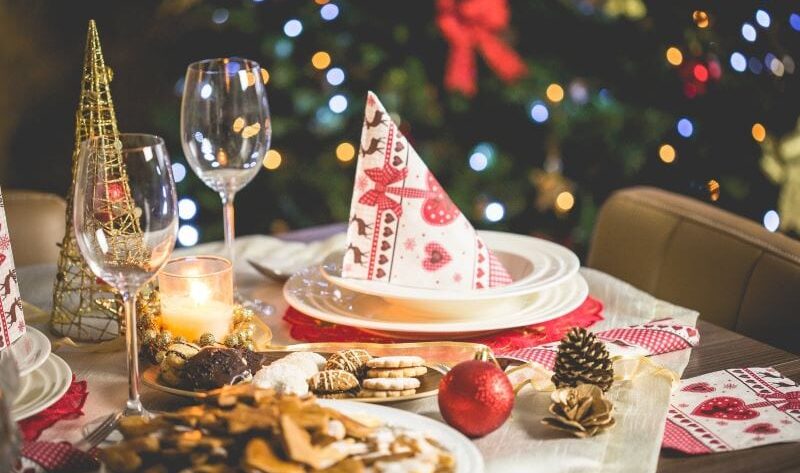The holiday season is a time when we come together with family and friends to enjoy good food, exchange gifts, and create lasting memories. And at the center of these joyous gatherings is the holiday table, overflowing with a bounty of delicious dishes that have been passed down from generation to generation. From turkey and ham to stuffing and cranberry sauce, Christmas dinner is a feast for the senses that celebrates history, tradition, and culture.
From Medieval Roots to Modern Delights: A Brief History of Christmas Feasting
The history of Christmas dinner can be traced all the way back to medieval times when feasts were held to celebrate the winter solstice. These feasts typically featured a roasted boar, goose, or turkey, complemented by vegetables and fruits that had been preserved from the summer harvest. As Christianity began to spread, the holiday became an opportunity to celebrate the birth of Jesus Christ, and the feast evolved to include religious symbols such as the Yule log and the Christmas pudding.
Over time, regional variations of Christmas foods emerged, with each culture bringing its unique flavors and traditions to the table. In England, a staple of the Christmas dinner is roast beef, which is served with roast potatoes, parsnips, carrots, and Brussels sprouts. In France, the holiday is celebrated with a feast called Le Réveillon, which features oysters, foie gras, and a traditional Christmas turkey stuffed with chestnuts. In Italy, families prepare a fish dish called La Vigilia, which consists of seven different types of fish served on Christmas Eve.
In America, the traditional Christmas dinner typically includes roast turkey or ham, mashed potatoes, stuffing, cranberry sauce, and green bean casserole. However, families often add their unique twists to these dishes, such as southern-style collard greens or a pumpkin pie spiced with cinnamon and nutmeg.
One of the most beloved Christmas dishes in America is eggnog, a rich and creamy concoction made with eggs, cream, sugar, and nutmeg. Eggnog has been a part of American holiday traditions since the 1700s and was first enjoyed in the northeastern states where dairy farming was prevalent.
In recent years, the trend of fusion cuisine has also made its way to the holiday table. This trend encourages experimentation with flavors and ingredients from different cultures, resulting in a delicious and adventurous culinary experience. For example, some families may add a Caribbean twist to their Christmas dinner with jerk seasoning or prepare a Mexican-inspired feast with tamales and posole.
Celebrating Together: The Joy and Meaning of Sharing Meals with Loved Ones
No matter where you are in the world, the holiday table represents a time to come together with loved ones and celebrate the joy of the season. Whether you’re enjoying a traditional roast beef dinner in England or a spicy tamale in Mexico, the true meaning of Christmas dinner lies in the memories and traditions that we create with our families and friends.
In conclusion, feasting at the holiday table is a delicious journey through history, tradition, and regional Christmas dishes. As we gather around the table with those we love, let us savor the flavors of the season and reflect on the rich cultural heritage that has shaped our holiday traditions. Let us embrace the spirit of generosity and kindness that defines this special time of year and create memories that will last a lifetime.




